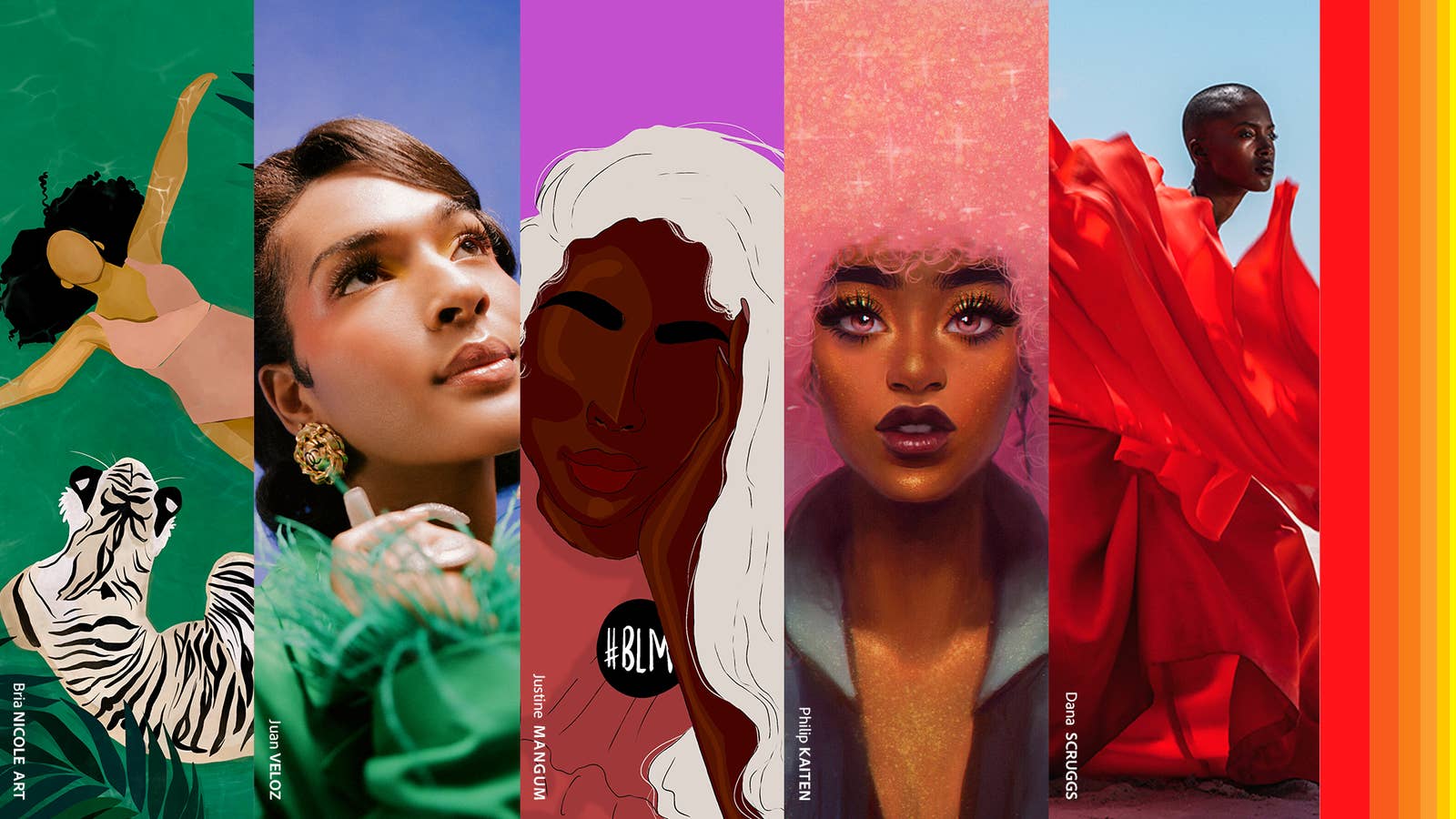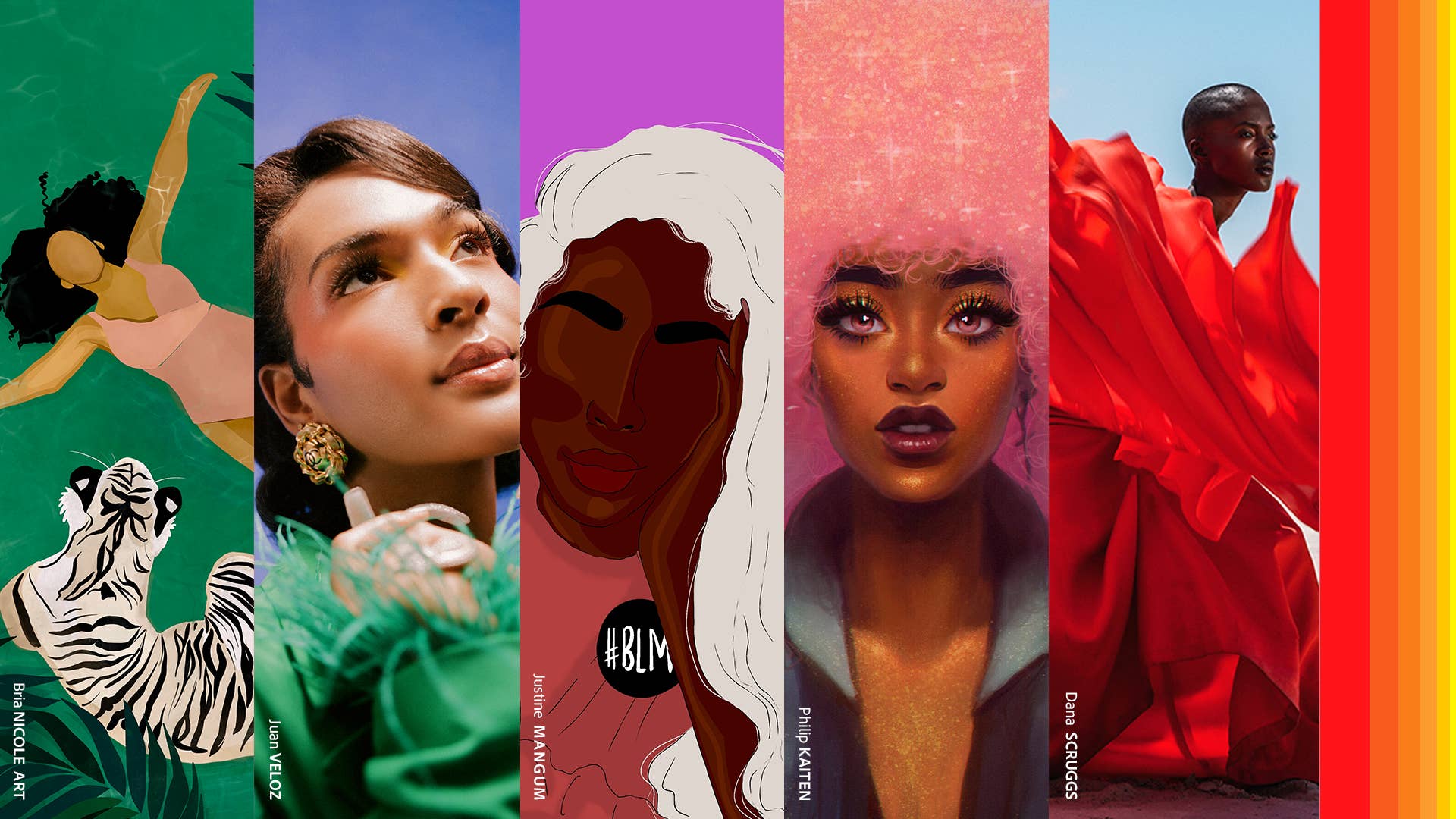
Creativity is the great connector. It allows people to express themselves, tell their stories their own way, and bring us all together, lowering barriers and crossing divides. Maybe it’s a song that becomes the soundtrack to a particular point in your life or a painting that speaks to your spirit without words. No matter the medium, the expression of that moment was brought to life for you by someone you’ve probably never met, but moved you through a shared connection.
Yet all artists haven’t been treated equally. For years, Black creators across all mediums have had to work twice as hard with no guarantee their work would be seen, shared, and celebrated around the world. And while gains have been made in recent years, more needs to be done to level the playing field for Black creative expression and elevate the full spectrum of Black creativity. Ultimately, the more perspectives we all see, the more vibrant the world becomes.
In celebration of Black creativity, Adobe expanded on its When I See Black film to showcase groundbreaking creators at ComplexLand. The digital destination highlighted the works of Bria Nicole,Dana Scruggs,Juan Veloz,Philip Kaiten (VactuART), and Justine Magnum of Winnie Weston within the Adobe Creativity Space. All five creators have used their work and platforms to demonstrate the unlimited breadth and beauty of Black expression and creativity.
On the heels of their ComplexLand showcase, these rising stars share their thoughts on bringing their creativity to life virtually, what inspires them about their identity and Blackness, and how this generation of Black creators is changing the rules.
DANA SCRUGGS, Photographer, New York, NY
"We understand that if one of us wins - we all win."
Can you remember the first time you used your art to make a statement? What message were you trying to convey and how was it received?
I moved to New York in August of 2012 and shot three tests during my first week—two female models and one male. Shooting the male model helped me I realize I enjoyed capturing the athleticism and masculinity of the male form. For the next six years, I focused on photographing men and then ultimately photographing Black men. I was aware there was little opportunity for commercial success if I was only shooting men, but it wasn’t about the money for me. It was about the work.
What’s the most challenging aspect of being a Black artist?
The art, publishing, fashion, and commercial arenas are only now starting to take Black artists seriously. “White is right” has been the spoken and unspoken ideology within these institutions. Even in Black institutions, some of our favorite Black publications only just started hiring Black photographers. If you look at their archives—most of their covers were shot by white men. Black creatives being seen as legitimate and worthy is still a big issue, even though progress is being made.
How do you think your generation of creatives is helping to redefine what it means to be a Black artist?
Previously, there were only a handful of Black creatives that were known to the public, within the art scene, the publishing scene, the fashion scene, and within the commercial scene. We were tokenized. Within the last few years, I’ve seen a huge shift amongst emerging Black creatives. Not only are more of us known to the public and within professional spaces, we’re more helpful and supportive of each other publicly and professionally. We understand that if one of us wins - we all win."
JUAN VELOZ, Photographer, Los Angeles, CA
“I hope everyone takes honesty and love from my work.”
Where are some unexpected places you receive inspiration for your work?
My shower. I meditate in my shower and a lot of my inspiration comes from there.
What’s the most challenging aspect of being a Black artist?
Having to work 10 times harder [than other non-Black artists]. In my case, I’m a Black gay Latino in this industry, so I have to make sure I represent and tell the stories of my people who are trying to be silenced.
How did it feel having your work on display at the first-ever ComplexLand?
It feels great! It’s a true honor to have new eyes on my work. I always say: ‘You never know who’s watching at this moment.’ I hope everyone takes honesty and love from my work.
JUSTINE MAGNUM OF WINNIE WESTON, Illustrator, Alexandria, VA
“As a millennial, I think my generation of creatives is redefining being a Black artist as another way of freedom.”
Where are some unexpected places you receive inspiration for your work?
I receive inspiration from Black women in my life and around the world. Our beauty, brilliance, and creativity inspire me. Black women really are Black Girl Magic personified! I’m also inspired by my family and ancestors who have instilled in me the importance of celebrating Black joy.
Can you remember the first time you used your art to make a statement? What message were you trying to convey and how was it received?
I attended a performing arts high school in Virginia and the graduating seniors had to create an art series. For my project, I did acrylic paintings on canvas of important times in society. My first painting was of enslaved Black women picking cotton. The painting was special to me because it showcased my ancestor’s strength. The painting was well received by my teachers and the audience. My parents still remind me of how powerful that painting was. In fact, the painting is at their house.
What’s the most challenging aspect of being a Black artist?
The most challenging aspect of being a Black artist is having the audacity to occupy space in the art world. As a Black artist, there are moments where we get discouraged when we don’t see ourselves magnified in the creative community. However, even with our challenges, the Black art community makes it worth it because we watch out for each other. Our community is powerful and one of a kind.
PHILIP KAITEN (VACTUART), Digital Artist, Brooklyn, NY
"I do hope people that see my work are inspired to support a Black creative."
Can you remember the first time you used your art to make a statement? What message were you trying to convey and how was it received?
The first time I used my art to make a statement was fairly recent. I made a piece of a Black woman with neon green-dyed hair and a stylish outfit with the phrase "Be You" above her. I wanted to express that it's okay to have unnaturally colored hair and a unique sense of style as a Black woman.
I grew up hearing harsh judgment that Black women and men shouldn't wear neon colors because it doesn't look good on our skin tone. That always bothered me because it wasn't true at all. The response I got from it was great. I've gotten comments from supporters saying that it makes them proud to be a Black woman.
How do you think your generation of creatives is helping to redefine what it means to be a Black artist?
By not letting judgment get in the way of what we believe in and pushing the norm. Back in the day, we were scared and really self-conscious at the thought of expressing ourselves because we knew that harsh judgment would be attached to it. We don't care anymore because we realized that worrying about societal acceptance only holds you back from your true potential.
What’s the most challenging aspect of being a Black artist?
I think the most challenging aspect of being a Black artist is getting acknowledged not only for my talent but for who I am. I sometimes feel like if I wasn't Black, I'd be more successful. No matter how qualified I am for my dream job, I have to work twice as hard to get to the building much less in the door.
BRIA NICOLE, Visual Artist & Illustrator, Houston, TX
“When I see Black I see joy.”
How do you think your generation of creatives is helping to redefine what it means to be a Black artist?
I think my generation is seeing more and more artists capturing not only our pain and struggle but also who we are outside of that. We are a lively, creative, innovative, beautiful people and so many artists are centering their work around those qualities. We’re making ourselves seen so that the next generations of Black children will grow up with and be able to experience art and storytelling that is actually relatable. They will know they are important enough to be the subject of great art.
Where are some unexpected places you receive inspiration for your work?
I’m pretty obsessed with interior design and I spend hours every single day going through design blogs, books, and videos to get ideas on how I can pair certain colors and textures together in my art. I also love pottery, ceramics, and glassblowing. I hope one day I might learn those things.
How did it feel having your work on display at the first-ever ComplexLand?
It’s definitely surreal! I always enjoyed creating and being able to acquire so many supporters of my art was so unexpected and wonderful. That was good enough for me. Now on top of that, to know a platform as large as ComplexLand enjoys my work enough to share it with the world is a really fulfilling thing, and I’m exceptionally grateful.
To hear more stories from creators around the world check out Adobe's diverse voices platform HERE.

